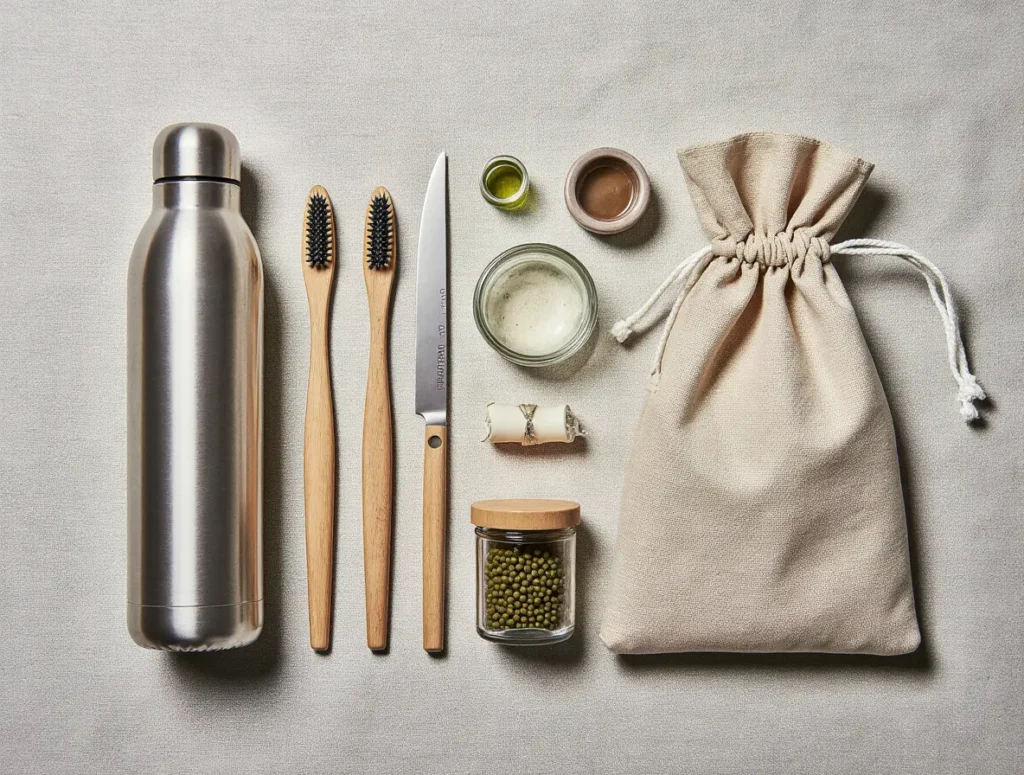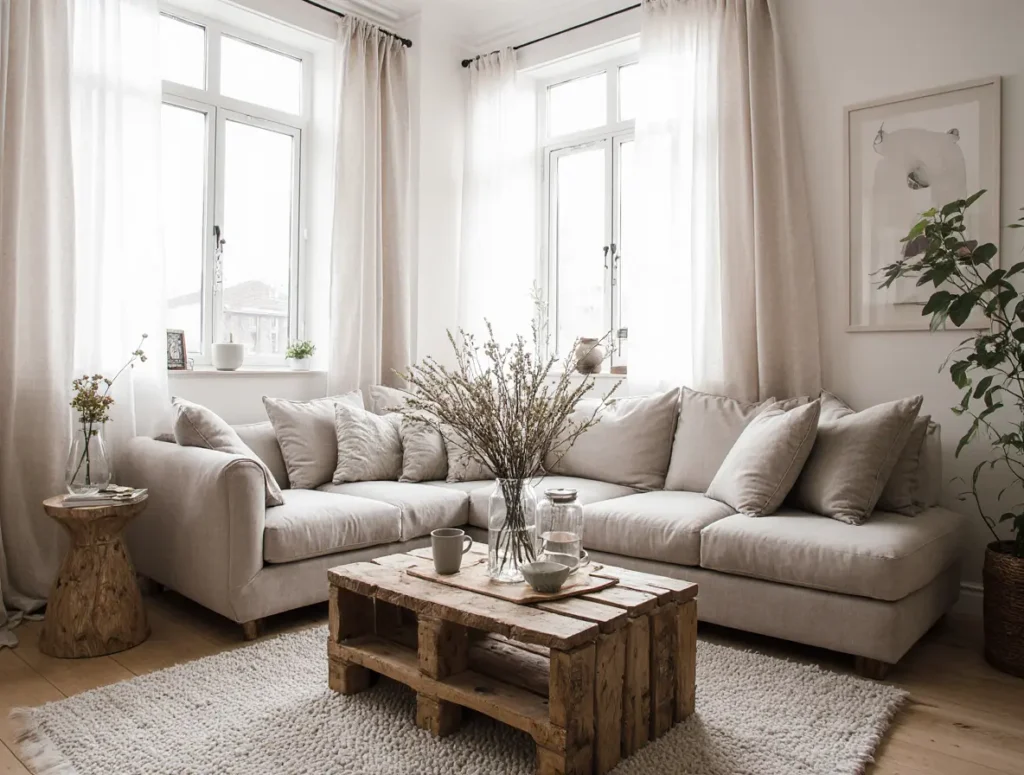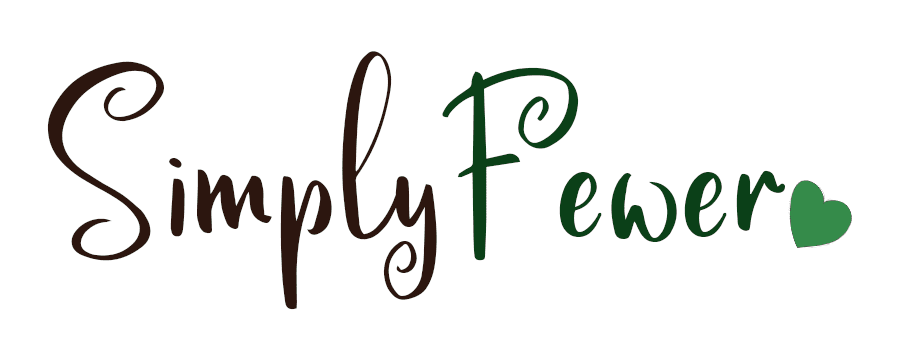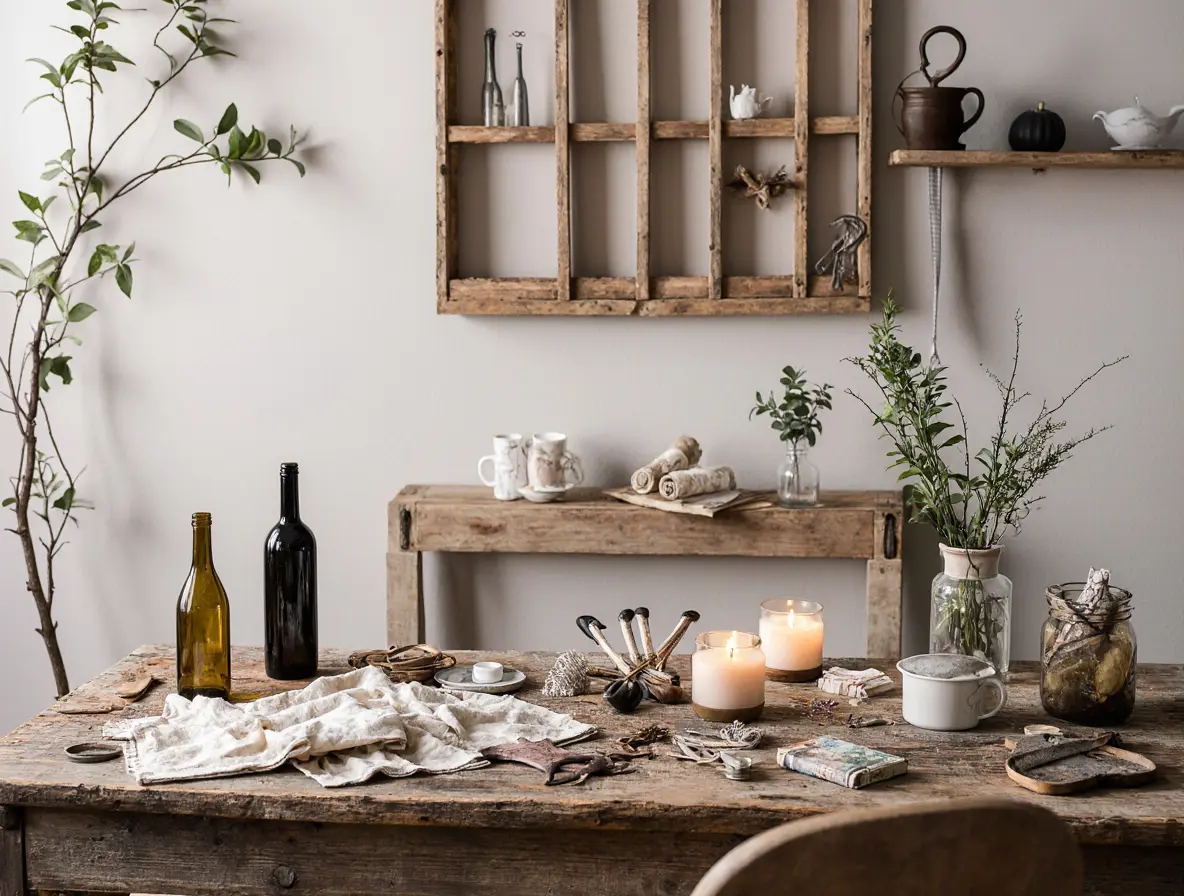Why Eco-Friendly Simple Living Matters
Imagine stepping into your home and feeling a wave of calm because every item has a purpose and tells a story. That’s the beauty of eco-friendly simple living: a blend of minimalism and sustainability that doesn’t just clear your space—it clears your mind and protects the planet too.
Why is this so important today? Because our choices at home echo far beyond our walls. When we reduce waste, swap wisely, and upcycle creatively, we aren’t just saving money—we’re shaping a greener future. And yes, it can be surprisingly easy and rewarding!
In this guide, we’ll explore practical sustainable swaps, creative upcycling projects, and everyday zero-waste hacks perfect for minimalist homes. Ready to transform your space—and your lifestyle? Let’s dive in!
Embracing Eco-Friendly Simple Living: The Mindset Shift
Eco-friendly simple living isn’t about deprivation; it’s about intention. Think of it like curating an art gallery: you only keep pieces that add beauty, function, or meaning.
Start by asking yourself: Do I love this? Does it serve a purpose? Could it serve another? By shifting from consumption to curation, we create homes that reflect who we truly are—not just what stores sell us.
Consider this: buying less doesn’t mean living with less joy. It means making space for what truly matters. It’s like pruning a rose bush—not to punish it, but to help it bloom.
Many who start on this path find they save money, feel less stressed, and enjoy their spaces more. And when we stop measuring life by what we own, we begin to measure it by what we experience.
Sustainable Swaps for Every Room
Small choices add up—especially when you repeat them daily. Here’s how to swap out wasteful habits for sustainable alternatives in each space.
Kitchen:
- Trade paper towels for washable cloths.
- Choose beeswax wraps instead of plastic wrap.
- Use glass storage containers instead of single-use plastic bags.
- Compost food scraps to nourish your garden.
Bathroom:
- Switch to shampoo and conditioner bars—no plastic bottles needed!
- Replace disposable razors with a safety razor (you’ll save hundreds over time).
- Try bamboo toothbrushes instead of plastic.
Living Room:
- Decorate with second-hand finds or natural materials.
- Use LED bulbs—they last longer and cut energy use.
- Ditch synthetic air fresheners for essential oils or simmer pots.
Laundry:
- Use wool dryer balls instead of single-use dryer sheets.
- Switch to refillable or powder detergent in cardboard boxes.
These swaps aren’t just greener—they often save money and reduce clutter, perfectly matching a minimalist aesthetic.
Creative Upcycling Projects That Add Character
Why buy new when you can create something unique? Upcycling turns “trash” into treasure—and each piece tells your home’s story.

Old T-shirts → Reusable Bags:
Cut and sew old tees into shopping bags. Soft, washable, and personal!
Wine Bottles → Vases or Lamps:
Remove labels and paint or wrap with twine for rustic charm. Add fairy lights for cozy mood lighting.
Wood Pallets → Shelves or Benches:
Sand and stain pallets to build stylish shelves, shoe racks, or entryway benches.
Glass Jars → Storage:
Use for pantry staples, bathroom cotton rounds, or DIY candles.
Broken Tiles → Mosaic Art:
Turn leftover tiles into colorful tabletops or garden stones.
These projects don’t just save items from landfills—they add soul and story to your minimalist home.
Zero-Waste Hacks for Everyday Living
Think of zero-waste living as a game of “how can I do this differently?” Once you get creative, it becomes second nature.
- Buy in bulk: Avoid packaging waste by filling your own jars.
- Carry a “zero-waste kit”: Include a reusable water bottle, cutlery, straw, and tote bag.
- Repair, don’t replace: Learn basic sewing or find local repair cafés.
- Digital receipts: Ask for email receipts instead of paper ones.
- Swap paper towels: Microfiber cloths or old rags work better and last longer.
- Freeze leftovers: Reduce food waste by storing meals in glass containers.
- Meal plan: Saves time, money, and keeps food waste low.
Adopting these habits can feel like second nature—and your trash can will empty slower than ever!
How Minimalism Supports Eco-Friendly Living
Here’s the secret: minimalism isn’t about empty spaces—it’s about purposeful spaces. When you own less, you use what you have more fully. Fewer items mean less maintenance, less waste, and more appreciation.
A minimalist kitchen with only the tools you love keeps you cooking at home, which saves money and packaging waste. A capsule wardrobe means you wear everything you own—and buy less over time.
Think of it like cooking with quality ingredients: fewer, better choices make for a richer life.
Expert Tips and Real-Life Stories
Environmentalist Bea Johnson, known as the pioneer of the modern zero-waste movement, lives by the five Rs: Refuse, Reduce, Reuse, Recycle, Rot—in that order. Her family of four produces just one jar of trash per year!
Designer Sarah Sherman Samuel combines minimalism and sustainability by using natural, durable materials in her home remodels, proving eco-friendly can be beautiful.
And then there’s Mia, a reader who wrote to say that after switching to refill stores and second-hand furniture, she saved over $1,200 in six months—and loves her simpler home more than ever.
These stories show it’s not about perfection—it’s about progress.
Common Challenges (And How to Overcome Them)
We all hit roadblocks. Here’s how to get past the most common ones:
- “It’s too expensive.” Start small! Even one swap—like reusable water bottles—makes a difference. Over time, you’ll save money.
- “I don’t have time.” Focus on habits you already do (like grocery shopping) and change how you do them (buying bulk, avoiding packaging).
- “What if it looks messy?” Minimalist design thrives on neutral colors and simple storage. Upcycled items can be both functional and stylish.
- “My family won’t join.” Lead by example. Once they see the benefits, they often follow.
Remember: you don’t have to do everything today. Step by step is still forward.

Conclusion: A Greener, Simpler Tomorrow Starts at Home
Living sustainably in a minimalist home isn’t about having less joy—it’s about having more meaning. Every sustainable swap, upcycled piece, and zero-waste habit is a small act of hope and change.
Picture your home, years from now: uncluttered, calming, and filled with objects you truly cherish—all while treading lightly on the Earth.
It starts with a single choice. Ready to make yours?
FAQs
Q1: What is eco-friendly simple living?
It means combining minimalist principles with sustainable choices—owning less, wasting less, and living intentionally for your well-being and the planet.
Q2: Is zero-waste living realistic for busy people?
Yes! Start with small swaps like reusable bottles or bulk shopping. Every step counts, and habits build over time.
Q3: How do I convince my family to go minimalist and eco-friendly?
Start by showing—not telling. Share benefits like saving money, decluttered spaces, and healthier choices. Over time, others often join in.
Q4: Are upcycling projects expensive?
Not at all! Many use items you already have. Plus, they save money by avoiding new purchases.
Q5: Where do I find inspiration for sustainable home projects?
Follow zero-waste bloggers, Pinterest boards, or Instagram accounts. Thrift stores and community workshops also spark great ideas.

